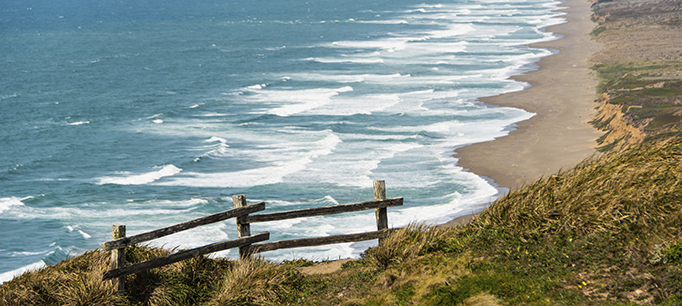A longer version of this piece was recently published by “Water Deeply.”
Could desalination provide a reliable supply of water for California? A number of policy makers have been raising this question in response to water-supply challenges brought on by the drought. Around the globe, some similarly dry places are getting a significant share of their water through desalination.
Officials in some cities (especially in Southern California) certainly think so, and are taking steps to develop seawater desalination plants. The state’s water bond allocates $725 million to help local water agencies build water recycling and desalination plants. Recent proposals that prioritize desalination include Senator Dianne Feinstein’s proposed water bill, which would provide $100 million in funds for desalination projects; Assembly Bill 1925 by assemblywoman Ling Ling Chang, which would establish annual goals for producing potable water through desalination; and the Obama’s administration proposed budget for 2017, which would launch an Energy-Water Desalination Hub, and provide funding for other desalination initiatives.
California has more than 60 years’ experience with desalination, and yet the process remains a minimal part of the state’s water system, for a number of reasons. Here are some key facts to know about desalination in California today.
-
It’s not just about the ocean: Although desalination often uses seawater, in California and other western states it has mostly been used to remove salts from brackish water (which is saltier than freshwater but less salty than seawater). The state’s existing plants can produce almost 140,000 acre-feet from brackish sources, but only 57,000 acre-feet from seawater. Brackish desalination is generally much cheaper, because there’s less salt to remove. -
Seawater desalination will remain an expensive source of water: According to a recent report by the White House, current seawater desalination technologies will need to undergo a fourfold reduction in cost, a threefold decrease in electricity usage, and a twofold cut in carbon-dioxide emissions to compete with traditional water sources. -
California’s water supply varies from year to year, while desalination is a fixed long-term investment: Customers in water districts using desalination will pay higher costs for desalted water even in wet years when cheaper sources are available. -
California has relatively abundant supplies from other sources. Even during droughts, the state has a variety of water sources that can carry it through long dry periods, nearly all of which are significantly cheaper than seawater desalination. -
Environmental impacts are a concern. The most significant effects are ocean water intake, and brine disposal (in ocean and brackish plants). Desalination’s high energy use compared with other water sources also raises concerns about greenhouse gas emissions.
A drought is a bad time to rush into investments in desalination to address water supply problems that can be solved more effectively in other ways. Many desalination plants prompted by droughts—including in Australia, Spain, and here at home in Santa Barbara—either never were used or closed within a few years of operation because their high-cost water could not be justified once rains returned. Desalination is clearly not a silver bullet for California, but it is one tool to consider for communities facing long-term water insecurity.
Read our policy brief “California’s Water: Storing Water” (from California’s Water briefing kit, April 2015)
Read our policy brief “California’s Water: Paying for Water” (from California’s Water briefing kit, April 2015)
Visit the PPIC Water Policy Center water supply page


